Incorporating elements of the outdoors into your indoor space is more than just a design trend—it’s a lifestyle shift that connects you to nature while maximizing the functionality of your home. Whether you have a cozy apartment with a small balcony or a sprawling home with a lush backyard, the goal of blending indoor and outdoor living is to create a seamless flow that feels harmonious and refreshing.
I first experimented with this concept when I moved into a home with large glass doors leading to a patio. I wanted to make the transition between my living room and outdoor space feel natural, as if they were one cohesive area. With a few strategic changes—adding greenery, choosing transitional furniture, and emphasizing natural light—I achieved a serene, unified space that’s now the heart of my home.
In this blog, I’ll share actionable tips for styling a room to beautifully blend indoor and outdoor living, so you can enjoy the best of both worlds.
Why Blend Indoor and Outdoor Living?
Here’s why this design approach is worth embracing:
- Enhances Relaxation: Nature-inspired spaces promote calmness and well-being.
- Maximizes Space: Extending your indoor living area outdoors makes your home feel larger and more functional.
- Improves Aesthetics: A cohesive design creates visual harmony and elevates your home’s style.
1. Focus on Flow and Layout
Why It Matters:
A seamless transition between indoor and outdoor spaces starts with thoughtful spatial planning.
How to Do It:
- Position furniture to face the outdoor view or patio doors, drawing attention to the outdoor area.
- Use similar flooring materials or rugs both inside and outside for continuity. For example, pair indoor hardwood floors with outdoor decking in a similar tone.
- Arrange seating areas near entry points to the outdoors, making the transition feel natural.
Pro Tip: Avoid obstructing the view with heavy curtains or large furniture. Opt for sheer drapes or low-profile pieces instead.
2. Bring Nature Indoors With Plants
Why It Matters:
Adding greenery bridges the gap between indoor and outdoor spaces, creating a cohesive connection.
How to Do It:
- Use potted plants, such as fiddle leaf figs, monsteras, or palms, to mimic the foliage outside.
- Group plants of varying heights and textures for a natural, layered effect.
- Incorporate herbs or small trees near your windows or patio doors for a fresh, earthy vibe.
Pro Tip: Use matching planters indoors and outdoors for a coordinated look.
3. Maximize Natural Light
Why It Matters:
Light is a key element in creating a sense of openness and continuity.
How to Do It:
- Replace heavy drapes with sheer curtains or leave windows bare to let in as much light as possible.
- Install sliding glass doors, bi-fold doors, or French doors to blur the line between inside and outside.
- Use mirrors to reflect natural light and enhance the feeling of spaciousness.
Pro Tip: If replacing doors isn’t an option, use a large picture window to frame your outdoor view.
4. Choose Versatile, Transitional Furniture
Why It Matters:
Using furniture that works both indoors and outdoors enhances flexibility and visual consistency.
How to Do It:
- Opt for weather-resistant materials like teak, rattan, or powder-coated steel that look great inside but can withstand the elements.
- Use ottomans, poufs, or stools that can be easily moved between spaces.
- Invest in modular furniture that can adapt to your needs, such as sectional sofas or extendable dining tables.
Pro Tip: Choose neutral upholstery and finishes to blend seamlessly with both environments.
5. Incorporate Natural Materials
Why It Matters:
Natural materials evoke the outdoors and create a tactile connection to nature.
How to Do It:
- Use wood, bamboo, stone, or jute in your furniture and decor.
- Layer textures like linen, cotton, or woven fabrics for a cozy, organic feel.
- Incorporate elements like a stone coffee table or a driftwood accent piece for a touch of outdoor charm.
Pro Tip: Mix textures like smooth stone with rougher elements like jute rugs to mimic natural diversity.
6. Create a Unified Color Palette
Why It Matters:
A consistent color palette ties the indoor and outdoor spaces together.
How to Do It:
- Draw inspiration from the natural surroundings, using earthy tones like greens, browns, and soft neutrals.
- Add pops of color that are found outdoors, such as blue for the sky or yellow for flowers.
- Use similar textiles or patterns indoors and outdoors, such as striped cushions or floral prints.
Pro Tip: Keep bold colors to a minimum for a harmonious look, focusing instead on muted or natural shades.
7. Use Lighting to Set the Mood
Why It Matters:
Lighting plays a crucial role in extending the functionality of both spaces into the evening hours.
How to Do It:
- Add string lights, lanterns, or sconces to your outdoor area for a warm, inviting glow.
- Use dimmable indoor lighting to match the ambiance of your outdoor lighting.
- Place candles or LED tealights on tables or shelves to create soft lighting that flows between spaces.
Pro Tip: Solar-powered outdoor lighting is an eco-friendly option that’s perfect for patios or gardens.
8. Blur Boundaries With Decor
Why It Matters:
Small decor touches can enhance the sense of continuity between spaces.
How to Do It:
- Use throw pillows or cushions with similar patterns indoors and outdoors.
- Place decorative items like vases, lanterns, or sculptures on both sides of your patio doors.
- Hang artwork or mirrors near the transition zone to visually connect the two spaces.
Pro Tip: Use decor items made from natural materials, like terracotta pots or woven baskets, for a cohesive look.
9. Design a Cozy Outdoor Area
Why It Matters:
A well-designed outdoor area enhances the overall indoor-outdoor experience.
How to Do It:
- Add an outdoor rug to define the space and make it feel as cozy as your indoor living area.
- Include comfortable seating options like lounge chairs, hammocks, or cushioned benches.
- Use shade structures like umbrellas, pergolas, or awnings to make the space usable year-round.
Pro Tip: Create a focal point outdoors, such as a fire pit, water feature, or statement furniture, to draw the eye outside.
10. Keep It Functional and Low-Maintenance
Why It Matters:
The easier it is to maintain your space, the more you’ll enjoy using it.
How to Do It:
- Choose easy-care plants, like succulents or ferns, that thrive both indoors and outdoors.
- Opt for furniture and decor that are durable and weather-resistant.
- Keep pathways clear and furniture arranged for easy flow between spaces.
Pro Tip: Use washable outdoor fabrics for cushions and rugs to keep them looking fresh.
Picture Gallery

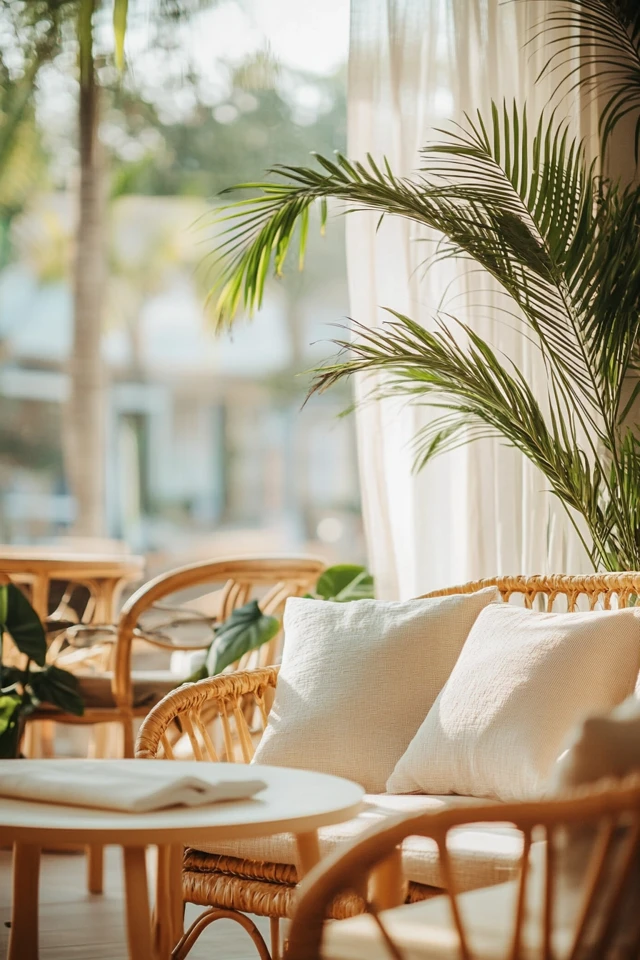
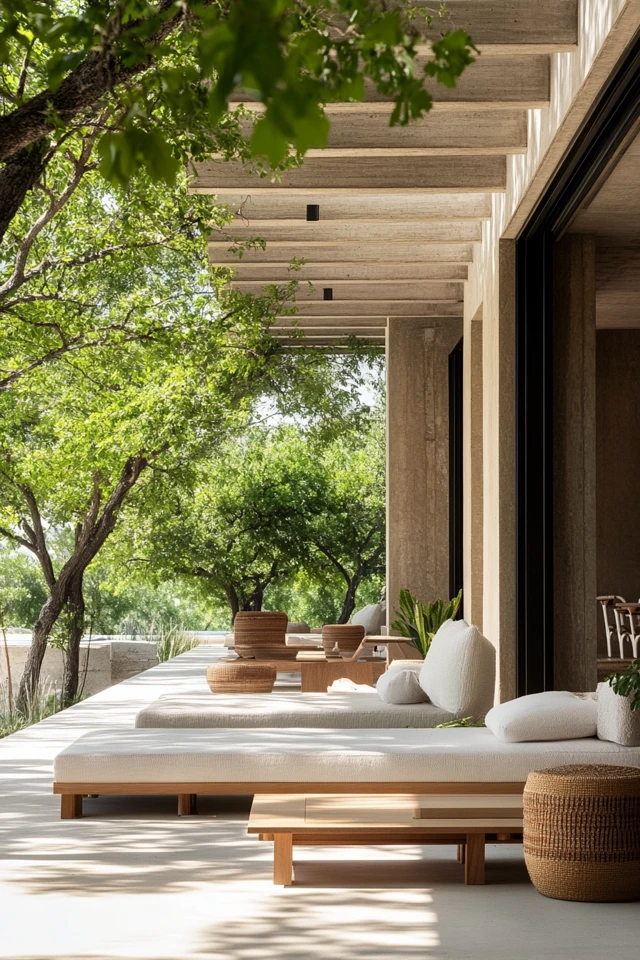
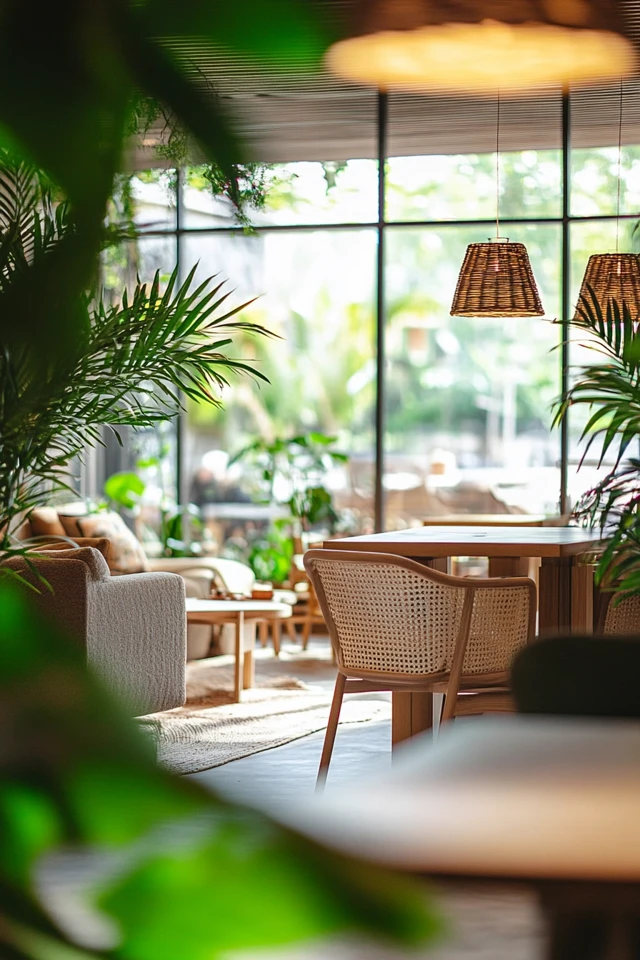
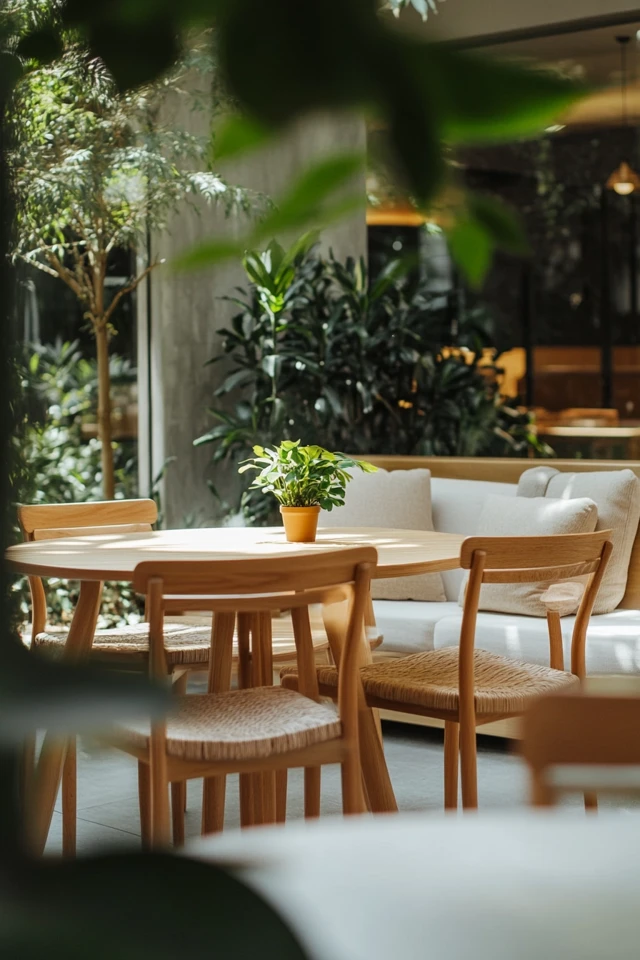

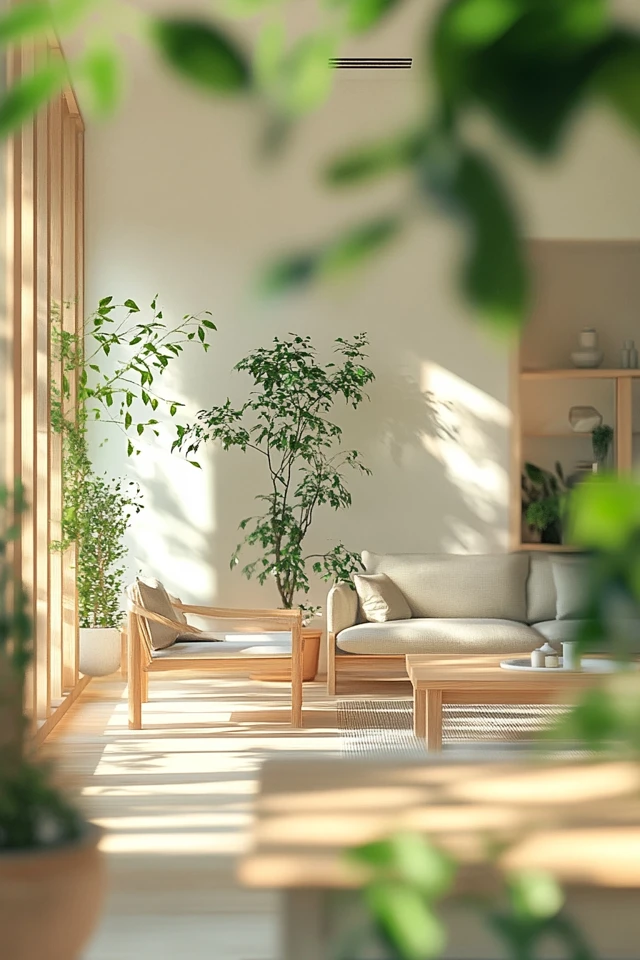
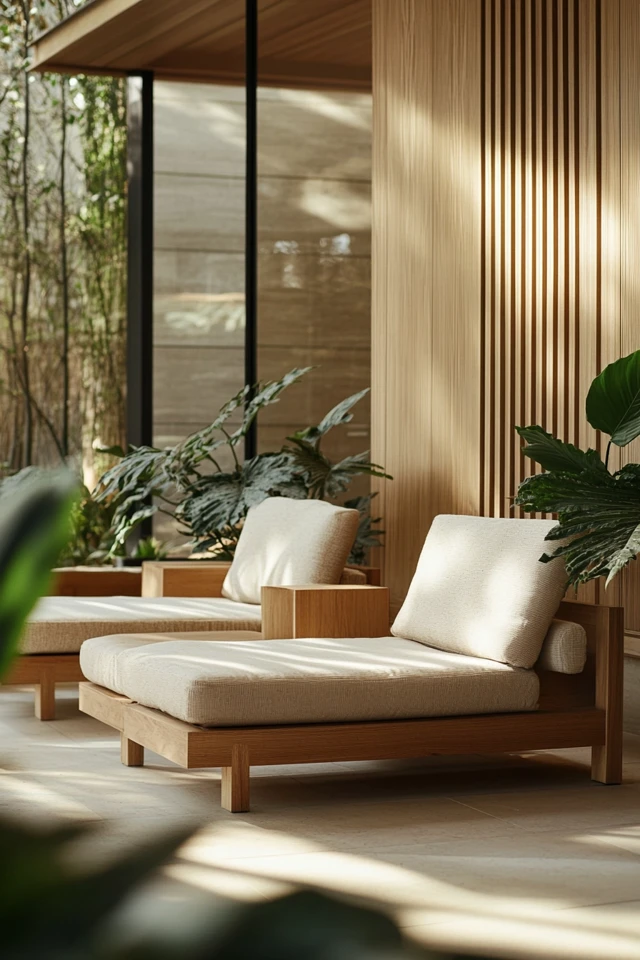
Conclusion
Blending indoor and outdoor living is all about creating harmony between your interior space and the beauty of nature. By focusing on layout, lighting, materials, and decor, you can design a space that flows seamlessly and feels like an oasis of relaxation and functionality.
Whether you’re hosting guests, working from home, or simply unwinding, a well-styled indoor-outdoor space brings endless joy and versatility to your home. So get creative, and let your home be an extension of the great outdoors!
FAQs
1. How do I make my indoor and outdoor spaces feel connected?
Use similar materials, colors, and furniture styles in both areas, and ensure the layout encourages flow between the two spaces.
2. What type of furniture works best for indoor-outdoor living?
Furniture made from weather-resistant materials like teak, rattan, or powder-coated steel works well for both spaces.
3. How can I enhance the transition between my living room and patio?
Install large glass doors, use plants to bridge the spaces, and add rugs or lighting that create a visual connection.
4. What are some low-maintenance plants for indoor-outdoor decor?
Succulents, snake plants, ferns, and rubber plants are great low-maintenance options that thrive in both environments.
5. How do I style outdoor spaces for year-round use?
Use weatherproof furniture, add shade structures or heaters, and include lighting to make the space functional in any season.

